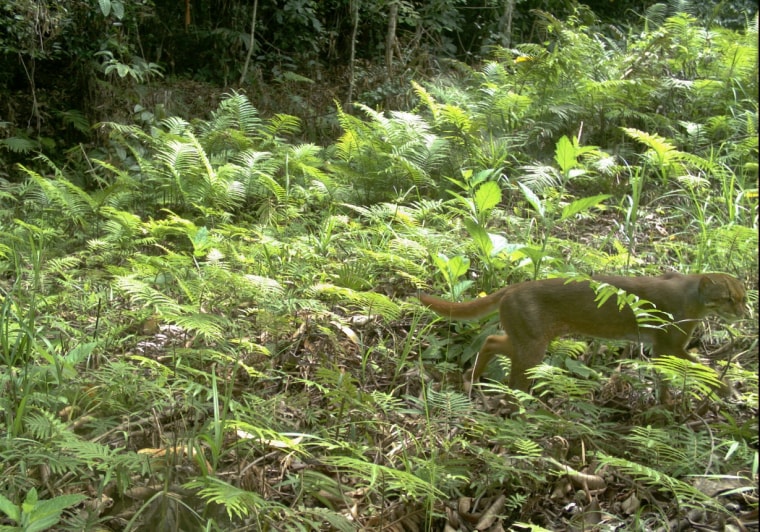A rarely seen cat has been photographed lurking where scientists least expected to find it — a heavily logged area on the Indonesian island of Borneo. The feline, known as the bay cat, is considered the world's least known.
Prior to the recent findings, the bay cat population was estimated at less than 2,500 mature individuals. The new sightings may be cause for an upward revision, according to a new study published Monday in the journal PLoS One.
Sightings of the bay cat, along with four other rare and endangered cats on Borneo, were captured on remotely operated cameras as part of an ongoing conservation project.
In addition to the bay cat, the cameras caught images of the Sunda clouded leopard, leopard cat, flat-headed cat and marbled cat between May and December 2011. All five cat species are considered important pieces of the tropical island's forest ecosystem and are predators of a wide range of animals.
"Conservationists used to assume that very few wild animals can live in logged forest, but we now know this land can be home for many endangered species," Robert Ewers, a biologist at Imperial College London and paper co-author, said in a news release.
The conservation project, Stability of Altered Forest Ecosystems, aims to gather information needed to make palm oil plantations more mammal friendly though measures such as saving patches of forest within plantations to protect endangered species.
"Our results suggest that the large areas of highly disturbed natural forest in the region could play a greater role in the conservation of wild felids than is currently recognized," Ewers and colleagues write in PLoS One.
"It does still remain to be known if populations of these five species would be viable in disturbed forest in the long term and we therefore echo previous assertions of the importance of undisturbed forest."
In addition to Ewers, paper co-authors include Oliver Wearn at Imperial College London, Marcus Rowcliffe and Chris Carbone at the Zoological Society of London, and Henry Bernard at the University of Malaysia Sabah.
